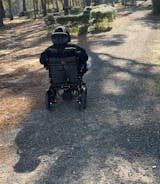How to Make Public Spaces More Accessible for Individuals with Mobility Challenges
Creating accessible public spaces is essential for fostering inclusivity and ensuring that individuals with mobility challenges can navigate their surroundings with ease and independence. Whether it's a park, office, shopping center, or community venue, making these spaces accessible benefits everyone. Here are some practical strategies to enhance accessibility in public spaces.
Install Ramps and Elevators
Stairs can be a major obstacle for individuals using wheelchairs, scooters, or walkers. Installing ramps and elevators provides essential access to multi-level spaces. Ramps should meet ADA standards, with a gentle slope and handrails for safety. Elevators should be spacious enough to accommodate mobility aids and include easily reachable controls with Braille and audio features for added inclusivity.
Ensure Wide Pathways and Doorways
Narrow pathways and doorways can make it difficult for individuals with mobility aids to navigate. Public spaces should have wide, unobstructed paths that allow for easy movement. Doorways should be at least 32 inches wide, and automatic doors are ideal for reducing physical effort and enhancing accessibility.
Add Accessible Restrooms
Restrooms in public spaces should be designed to accommodate individuals with mobility challenges. This includes installing grab bars, lowering sinks and soap dispensers, and ensuring there is enough space for a wheelchair to turn around. Stall doors should open outward, and toilet seats should be at a comfortable height to reduce strain.
Provide Accessible Parking
Accessible parking spaces are critical for individuals with mobility challenges. These spaces should be located near building entrances and include enough room for wheelchair ramps or lifts. Clearly marked signage and slip-resistant surfaces further enhance safety and convenience.
Use Non-Slip Flooring and Surfaces
Slippery surfaces are a common hazard for individuals with mobility challenges. Public spaces should use non-slip materials for flooring, especially in areas prone to moisture, such as entrances or restrooms. Outdoor spaces should have well-maintained paths with textured surfaces to provide better traction.
Include Seating Areas
Providing seating areas throughout public spaces allows individuals to rest as needed. Benches with armrests and backrests are especially helpful for individuals who need additional support when sitting or standing. Ensure seating is placed at regular intervals, particularly in large venues or outdoor spaces.
Install Signage for Accessibility Features
Clear, visible signage is essential for directing individuals to accessibility features such as ramps, elevators, and accessible restrooms. Signs should include large, high-contrast text and, where possible, Braille or tactile components for individuals with visual impairments.
Enhance Outdoor Accessibility
Parks, trails, and other outdoor spaces should be designed with accessibility in mind. Wide, smooth paths that are free of obstructions make it easier for individuals using mobility aids to navigate. Consider adding accessible picnic tables, raised garden beds, and viewing platforms to make outdoor activities more inclusive.
Provide Accessible Public Transportation
Public transportation systems should include features such as low-floor buses, ramps, and wheelchair lifts. Train stations and bus stops should have level boarding areas, tactile paving for the visually impaired, and clear announcements for arrivals and departures.
Educate Staff and Employees
Ensuring that staff members are trained to assist individuals with mobility challenges can make a significant difference. Training should include how to operate accessibility features like elevators, ramps, or automatic doors and how to provide respectful and effective assistance when needed.
Encourage Feedback and Continuous Improvement
Accessibility should be an ongoing effort. Encourage individuals with mobility challenges to provide feedback on how public spaces can be improved. Regular assessments and updates to accessibility features ensure that spaces remain inclusive and meet the needs of everyone.
In conclusion, making public spaces accessible is not just about meeting legal requirements—it’s about creating an inclusive environment where everyone can participate fully. By implementing these strategies, we can ensure that public spaces are welcoming and accessible for individuals with mobility challenges, promoting greater independence and equality for all.









